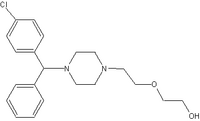Clinical Question: In patients with acute migraine, is metoclopramide, alone or in combination with other migraine medications, effective in diminishing pain and nausea?
Setting: Emergency department
Study Design: Systematic review
Synopsis: Metoclopramide was used originally to treat nausea caused by gastric stasis associated with acute migraine, as well as to enhance absorption of orally administered drugs. Subsequent studies showed relief of pain with the use of metoclopramide alone. In this meta-analysis, investigators gathered 13 randomized controlled trials from 596 potentially relevant studies that were identified by a search of several databases and sources. These studies evaluated the use of parenteral 10-mg metoclopramide to treat acute migraine in adults in emergency departments or headache clinics. The search was thorough and included an attempt to find unpublished research. The articles were screened by two independent reviewers to determine whether they met inclusion criteria.
Compared with placebo in five small studies enrolling 185 patients, metoclopramide produced significant reductions in headache pain, although the effect was not consistent (number needed to treat = four; 95 percent confidence interval, 2.1 to 95.1). Compared with other antiemetics, metoclopramide was as effective--or nearly so--in reducing headache pain and nausea (the study results could not be combined). In 40 patients, metoclopramide was as effective as sumatriptan in the rate of complete pain resolution, significant pain reduction, and the likelihood of nausea reduction. The combination of metoclopramide and dihydroergotamine was more effective than dihydroergotamine alone, valproate, meperidine/hydroxyzine, ketorolac, and prometh-azine/meperidine. Drowsiness, restlessness, and dizziness were reported with the use of metoclopramide.
Bottom Line: Parenteral 10-mg metoclopramide is somewhat effective when used alone and seems to add to relief when used with other migraine treatments. Given its relatively low cost and its two-pronged effect on pain and nausea, it should be considered in patients with acute migraine. (Level of Evidence: 1a)
Study Reference: Colman I, et al. Parenteral metoclopramide for acute migraine: meta-analysis of randomised controlled trials. BMJ December 11, 2004;329:1369-73. Used with permission from Shaughnessy AF. Metoclopramide (Reglan) effective in migraine. Accessed online March 1, 2005, at: http://www.InfoPOEMs.com.
COPYRIGHT 2005 American Academy of Family Physicians
COPYRIGHT 2005 Gale Group



